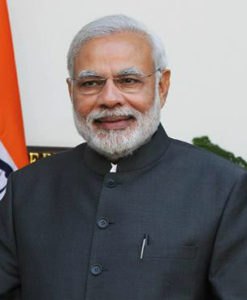India Nullifies 500, 1000 Rupee Bills to Target Corruption
 Prime Minister Narendra Modi declared 500 and 1,000 rupee bills null on November 8. This move represents the latest in a long-standing fight against graft and corruption in India, particularly with regard to the issue of black money.
Prime Minister Narendra Modi declared 500 and 1,000 rupee bills null on November 8. This move represents the latest in a long-standing fight against graft and corruption in India, particularly with regard to the issue of black money.
As of midnight on the morning of November 9, these bills, which possess the highest available value in rupee notes, were no longer legally acceptable. However, 72-hour exceptions were made for particular locations, such as hospitals and burial grounds. Indian citizens are also eligible to trade their obsolete bills at banks until December 30. Finance Minister Arun Jaitley stated that, as of Saturday, national banks had received deposits of nearly $30 billion USD worth of rupees since the announcement. The Indian government plans to print new 500 and 2,000 rupee notes to replace the original bills, which make up approximately 85 percent of India’s currency circulation, or 23 billion notes.
Prime Minister Modi’s primary motive for the removal of the 500 and 1,000 rupee bills is the fight to eliminate corruption, which constituted one of his primary platform goals when he ran for office. He stated in a recent speech that “black money and corruption are the biggest obstacles to eradicating poverty.” Black money in India refers to unreported and illegal monetary holdings that are maintained abroad by wealthy Indians. It is largely associated with large numbers of 500 and 1,000 rupee bills, which, according to the Finance Minister, have increased disproportionately in circulation in recent years.
The total amount of black money held abroad is unknown. However, the Indian Central Bureau of Investigation reported in 2012 that Indians held approximately $500 billion in foreign tax havens. The Panama Papers released the names of over 500 Indians involved in these illicit transactions.
Prime Minister Modi has also noted the relationship between large amounts of money and terrorism. The government indicated the use of fake Indian currency notes, which often cross into Pakistan, to be a major source of financial support for terrorist operations.
Though the Prime Minister intends to target the rich through currency reform, his move may prove detrimental to the poor in both urban and rural areas. One key reason is that the obsolete notes are creating a temporary phenomenon known as “discount scam,” in which the old notes are sold for an extra charge, only to be laundered afterwards. Moreover, only about 27 percent of Indian villages are located within three miles of a bank, a reality that may hinder currency exchange. Additionally, small business owners have been hit with reductions of sales because of the move.
Prime Minister Modi’s unexpected declaration has actually been in development for approximately six months. His decision to remove 500 and 1,000 rupee notes from circulation comes just before crucial State Assembly elections in Uttar Pradesh. The State Assembly elects members of the Rajya Sabha, the upper house of the Indian Parliament. Modi and his Bharatiya Janata Party (BJP) hope to leverage currency reform in order to advance their policy goals.
However, though the Prime Minister’s move has been meticulously calculated, the suddenness of his declaration presents a number of challenges to the Indian population as a whole. Even if detrimental effects are temporary, they may spur issues that impact the Uttar Pradesh National Assembly elections in 2017. The Indian government must monitor and control the currency transition carefully in order to properly address corruption without further affecting the poor.
